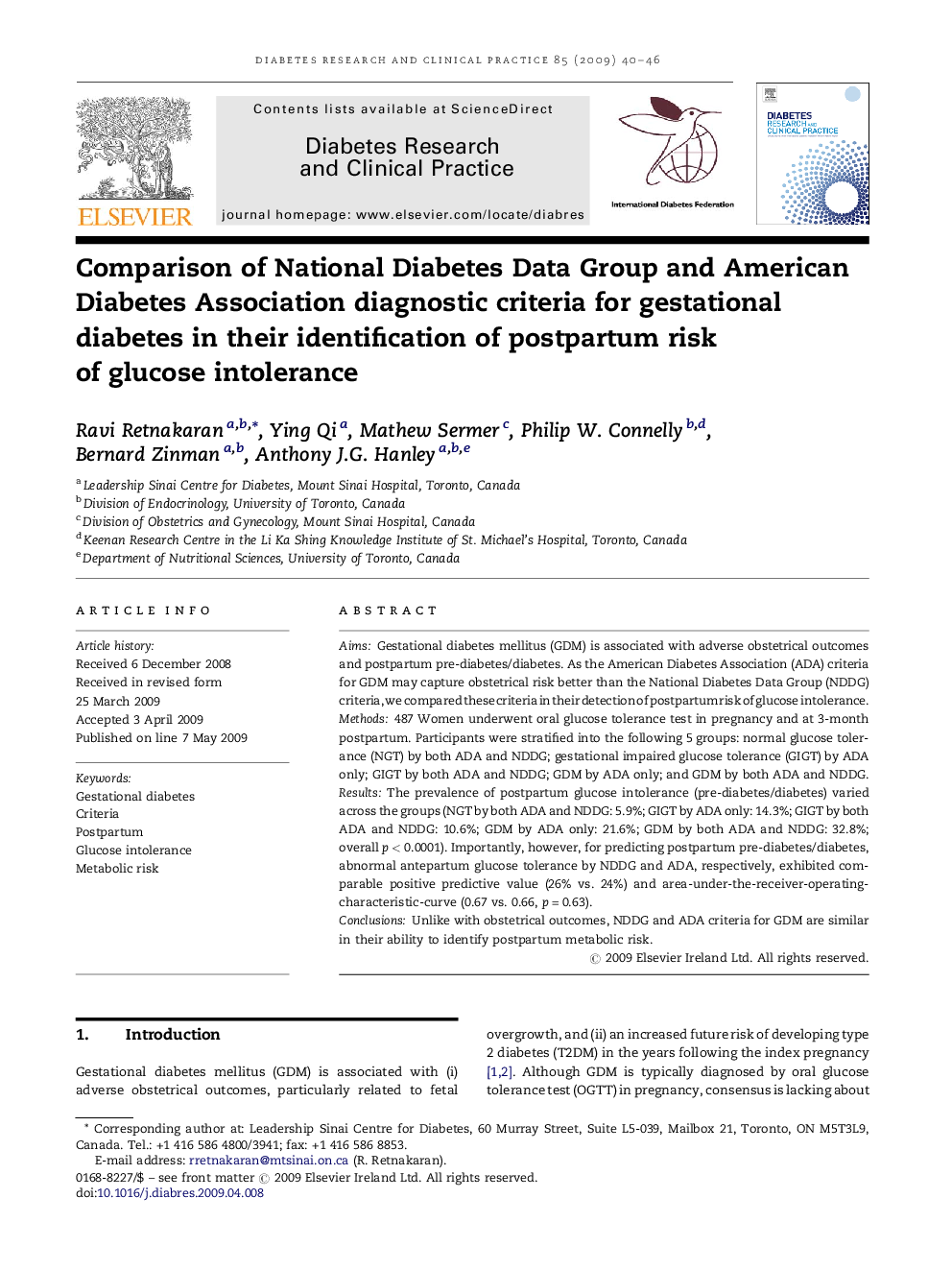| Article ID | Journal | Published Year | Pages | File Type |
|---|---|---|---|---|
| 2797959 | Diabetes Research and Clinical Practice | 2009 | 7 Pages |
AimsGestational diabetes mellitus (GDM) is associated with adverse obstetrical outcomes and postpartum pre-diabetes/diabetes. As the American Diabetes Association (ADA) criteria for GDM may capture obstetrical risk better than the National Diabetes Data Group (NDDG) criteria, we compared these criteria in their detection of postpartum risk of glucose intolerance.Methods487 Women underwent oral glucose tolerance test in pregnancy and at 3-month postpartum. Participants were stratified into the following 5 groups: normal glucose tolerance (NGT) by both ADA and NDDG; gestational impaired glucose tolerance (GIGT) by ADA only; GIGT by both ADA and NDDG; GDM by ADA only; and GDM by both ADA and NDDG.ResultsThe prevalence of postpartum glucose intolerance (pre-diabetes/diabetes) varied across the groups (NGT by both ADA and NDDG: 5.9%; GIGT by ADA only: 14.3%; GIGT by both ADA and NDDG: 10.6%; GDM by ADA only: 21.6%; GDM by both ADA and NDDG: 32.8%; overall p < 0.0001). Importantly, however, for predicting postpartum pre-diabetes/diabetes, abnormal antepartum glucose tolerance by NDDG and ADA, respectively, exhibited comparable positive predictive value (26% vs. 24%) and area-under-the-receiver-operating-characteristic-curve (0.67 vs. 0.66, p = 0.63).ConclusionsUnlike with obstetrical outcomes, NDDG and ADA criteria for GDM are similar in their ability to identify postpartum metabolic risk.
